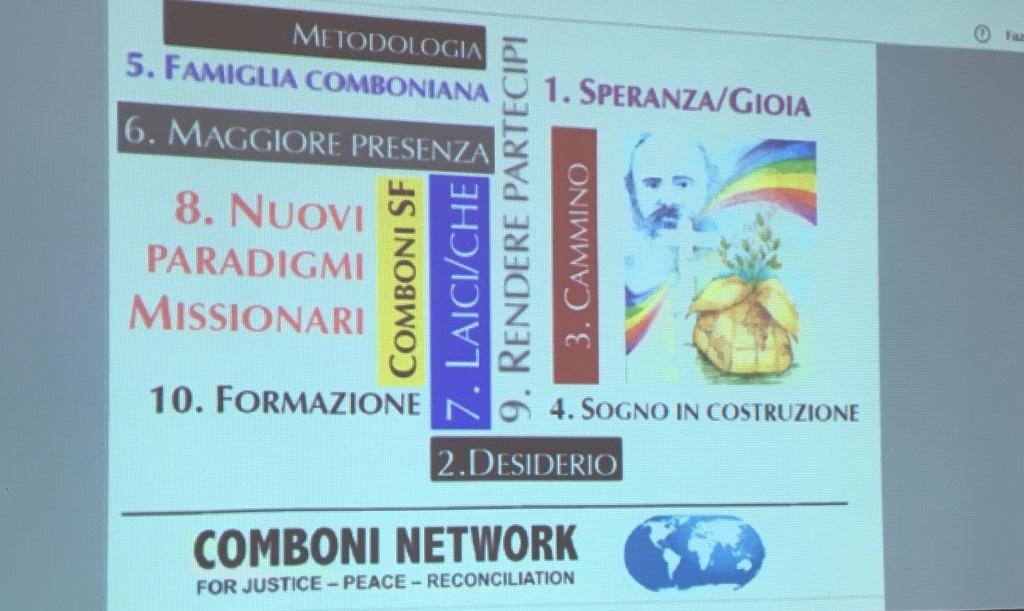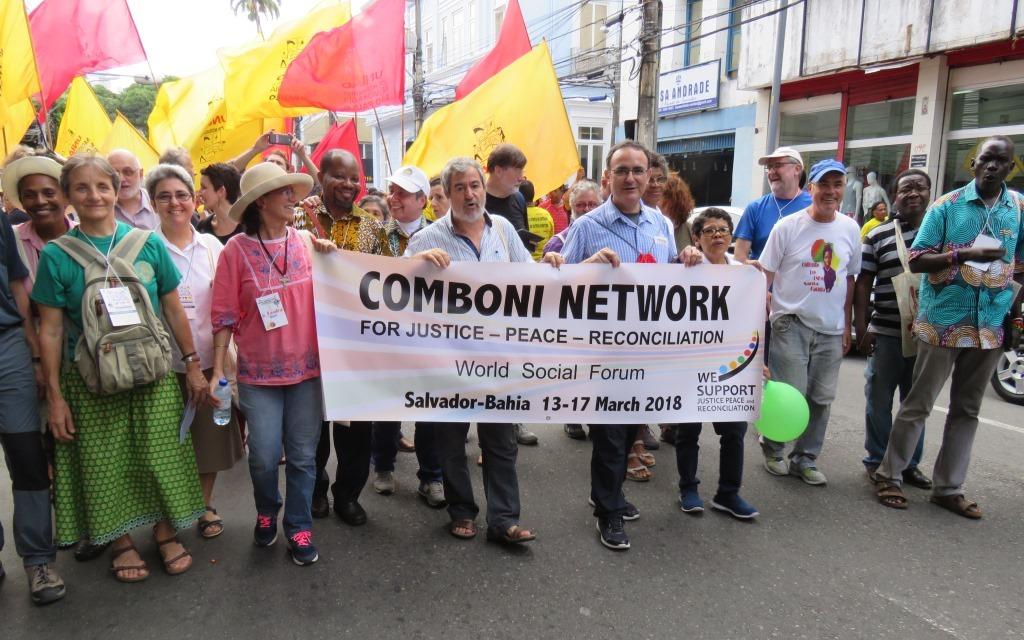Daniel Comboni
Comboni Missionaries
Institutional area
Other links
Newsletter
Saturday, June 7, 2025
The environmental emergency in a study led by Peking University and published in Forest Ecosystems: it is an SOS on sustainability, China’s forests are close to the carbon sink limit. “The problem of deforestation affects many areas of the planet. But particularly those areas that provide valuable timber and which, unfortunately, are also richer in biodiversity, such as rainforests and tropical forests”, warns the WWF. [Jpic-jp.org]
“Over the past 30 years, the world's forest area has shrunk by more than 420 million hectares. At a rate of about 4.7 million hectares per year since 2010.” The capacity of forests in China to store carbon is slowing down and could reach its limit in the coming years.
Sounding the alarm is a study led by Peking University and published in Forest Ecosystems. To estimate the future carbon sequestration of forest areas, the authors combined satellite data with data from field surveys. With this information, they developed models to predict how much above-ground carbon China's natural forests could store under optimal conditions. Unlike previous studies that relied on large-scale estimates, this study mapped carbon storage at a resolution of 0.1 revealing significant regional differences.
Forest alarm
Pope Francis has often repeated that the human environment and the social environment degrade together, one affecting the other. The real crisis, even before being environmental, is an anthropological crisis, a personal crisis that affects values, and so as the environment degrades, so does mankind, and vice versa.
The rate at which we are consuming the planet's forests is worrying, notes WWF. Moreover, the deforestation figures do not take into account the areas that are irreparably degraded every year due to over-exploitation of forests, pollution and the consequences of all those disasters, natural or man-made, caused by climatic events, fires and conflicts.
“The situation is serious not only because forests are home to high levels of biodiversity, but also because more than one billion people living in developing countries, in conditions of extreme poverty, are closely dependent on forest resources,” WWF points out.
In some western countries, such as Italy, there is a counter-trend with a spontaneous increase in forest area due to the abandonment of marginal hill and mountainous agricultural areas. “These are largely young forests that are poor in biodiversity, but certainly a natural process of reforestation that must be supported in the near future.”
Quantity of CO2
The accumulation of carbon dioxide and other greenhouse gases in the atmosphere contributes to rising global temperatures, i.e. to global warming. Natural carbon sequestration is one of the most effective defences against this phenomenon, because it reduces the amount of carbon dioxide in the air and stabilises the earth's climate.
Mature forests can retain large amounts of carbon. However, deforestation, fires and other degrading phenomena release carbon back into the atmosphere, rendering the benefits of sequestration useless. Protecting and restoring forests is therefore key to keeping carbon dioxide under control and limiting the greenhouse effect.
Reforestation consists of replanting trees in previously deforested areas, while afforestation aims to create new forests in areas where there were none. Both practices are powerful carbon sequestration tools, but must be managed carefully.
Some limits
The area of warm temperate deciduous forest, which contains mainly young forests, is expected to see the largest increase in carbon storage - with an increase of 26.36 per cent by 2060. In contrast, alpine forests, such as those on the Qinghai-Tibet Plateau, which are largely mature, will show only a 0.74 per cent increase. “We found that forests in different growth stages have very different carbon storage potential,” stresses scientist Qinghua Guo. “Younger forests still have room to grow, while older ones are reaching their limit.”
China has invested heavily in the protection and reforestation of natural forests, but this study suggests that simply increasing forest area is not enough. “As sequestration slows down, the key will be to protect old-growth forests while focusing on the prosperity of younger forests” (See Foreste, a un passo dal “punto di non ritorno”).
In this context, on 12th April, the Dicastery for the Promotion of Integral Human Development announced the theme chosen by Pope Francis for the 2025 World Day of Prayer for the Integrity of Creation, held annually on 1 September: “Seeds of Peace and Hope.” This day is part of the “Season of Creation”, an ecumenical initiative that runs from 1 September to 4 October each year. This year's theme reflects the urgent need to work “to create the conditions for peace, a lasting peace built together and inspiring hope.” The metaphor of the seed indicates the need for a long-term commitment, the fruit of concrete actions and a profound ecological conversion. The biblical reference text chosen for this edition is Isaiah 32:14-18, which directly links justice, peace and harmony with creation: "Then shall right dwell in the wilderness, and justice in the fertile field. My people will dwell in peace, in secure dwellings, in quiet and restful places."
Indeed, as Pope Francis and his predecessors have stressed, “there is a close link between peace and the protection of creation.” Already the World Day of Peace messages of 1990 and 2010, by St John Paul II and Pope Benedict XVI respectively, warned of the destructive consequences of war on nature. “The link between war and violence, on the one hand, and the degradation of the common home and the waste of resources (destruction and armaments), on the other, is very close,” warned Pope Francis' Encyclical (Victoria Cardiel).
This year's Creation Day has a special character: it coincides with the Jubilee Year of Hope, celebrates the 10th anniversary of the encyclical Laudato Si', and comes just before COP 30.
COP 30
COP 30, the 30th Conference of the Parties to the United Nations Framework Convention on Climate Change (UNFCCC), will be held from 10th to 21st November 2025 in Belem, Pará State, Brazil. This is the first time a COP will be held in the Amazon region, highlighting the importance of the rainforest in the fight against climate change.
The conference will address several key issues for the future of the forest: reducing greenhouse gas emissions, adaptation to climate change, climate finance for developing countries, renewable energy technologies and low-emission solutions, forest and biodiversity conservation, climate justice and the social impact of climate change. A central objective will be the assessment of progress towards the commitments of the Paris Agreement, in particular keeping the global temperature increase within 1.5°C.
An initiative and some doubts
Brazil plans to launch the Tropical Forest Forever Facility, a USD 125 billion fund designed to reward the conservation of tropical forests in developing countries, with payments scheduled to begin in 2026. However, in Brazil it-self, the construction of the Avenida Liberdade motorway in Belem, designed to improve accessibility during COP 30, has attracted criticism for its environmental impact because it crosses protected areas of the Amazon rainforest.
The city of Belem will also face significant logistical challenges due to its insufficient accommodation capacity to accommodate the approximately 60,000 expected participants. This will force the Brazilian government to adopt alternative solutions, such as the use of motels, converted ferries and schools as temporary accommodation, with consequent environmental costs.
COP 30, however, represents a crucial moment to strengthen global commitments in the fight against climate change, with a focus on protecting the Amazon and supporting the most vulnerable countries.




